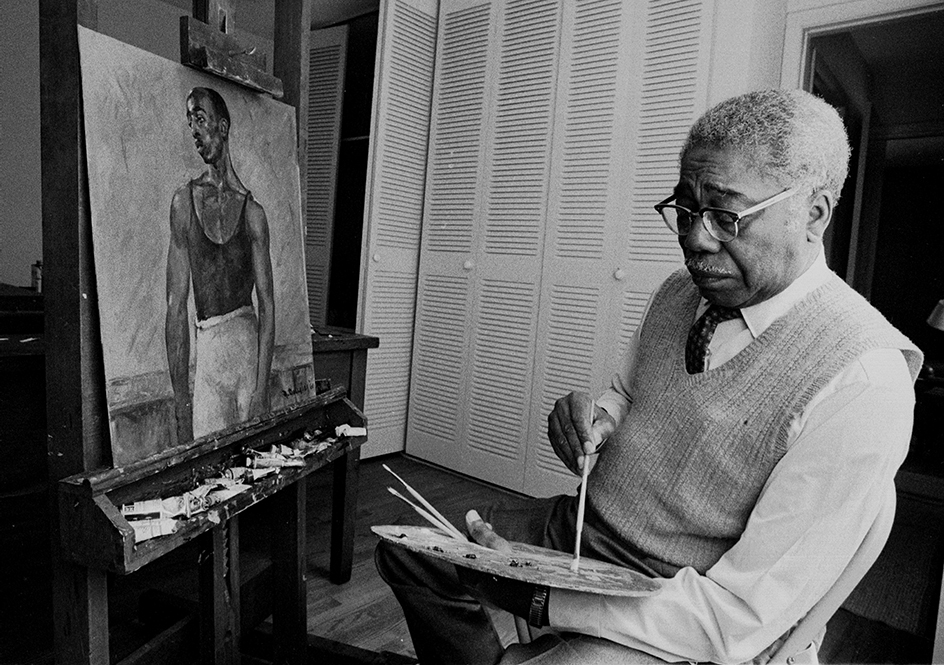Douglas, Aaron (1899-1979), was one of the first African American artists to incorporate African subjects, themes, and techniques into his art. His paintings and his book and magazine illustrations reflect the black struggle for creative and political freedom. In his work, Douglas encouraged African Americans to take pride in their heritage.

Douglas was the first African American artist to include modern art styles, such as Cubism and Art Deco, to portray the lives of black people in their jobs and at leisure (see Cubism ; Art Deco ). Douglas blended these modern styles with the geometric shapes found in African art. He often created his paintings using strong, overlapping silhouettes.
Douglas painted several murals that explore the progress of black life from central Africa to the modern United States. His most important murals were a series of four, called Aspects of Negro Life (1934). He painted the series for a branch of the New York Public Library, now the Arthur Schomburg Center for Research in Black Culture.
Douglas was a leading artist of the Harlem Renaissance. This important movement in African American literature and art flourished during the 1920’s and 1930’s in the Harlem district of New York City. Douglas’s first significant work was a series of illustrations for The New Negro (1925), a book by the Harlem Renaissance leader Alain Locke. Douglas later illustrated works by such black writers as Countee Cullen, Langston Hughes, and James Weldon Johnson.
Douglas was born on May 26, 1899, in Topeka, Kansas. He received a B.F.A. degree from the University of Nebraska in 1922. Douglas taught art at Fisk University in Nashville from 1937 to 1966, when he retired. He died on Feb. 2, 1979.
See also Harlem Renaissance .
